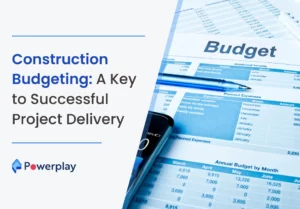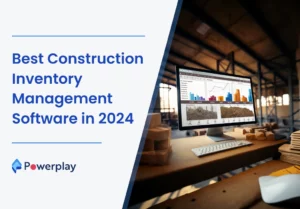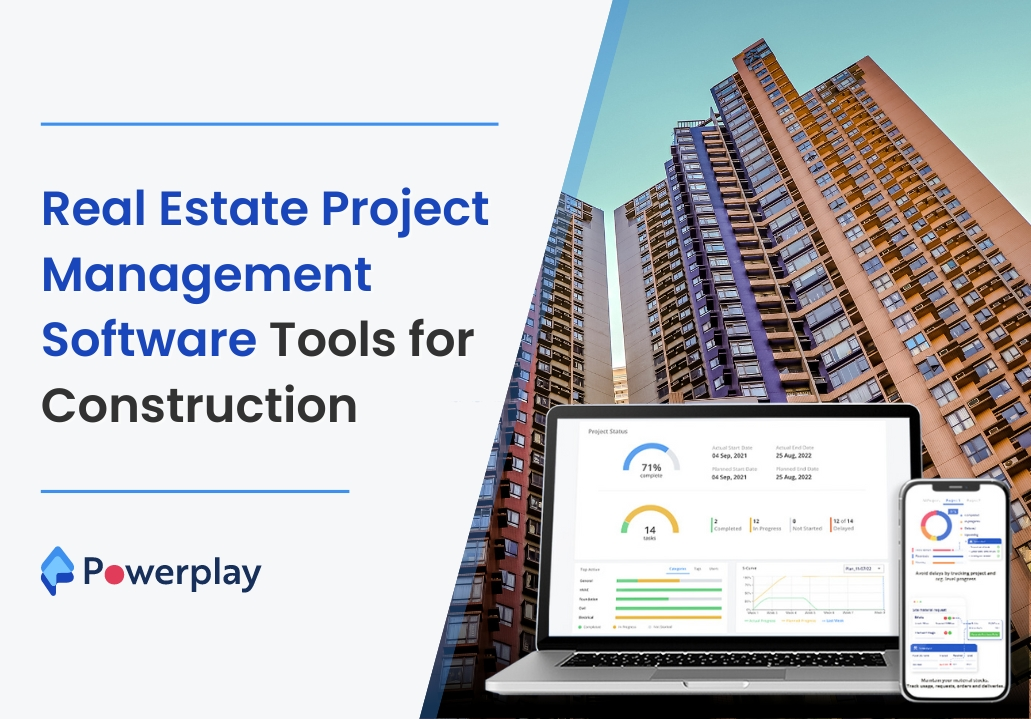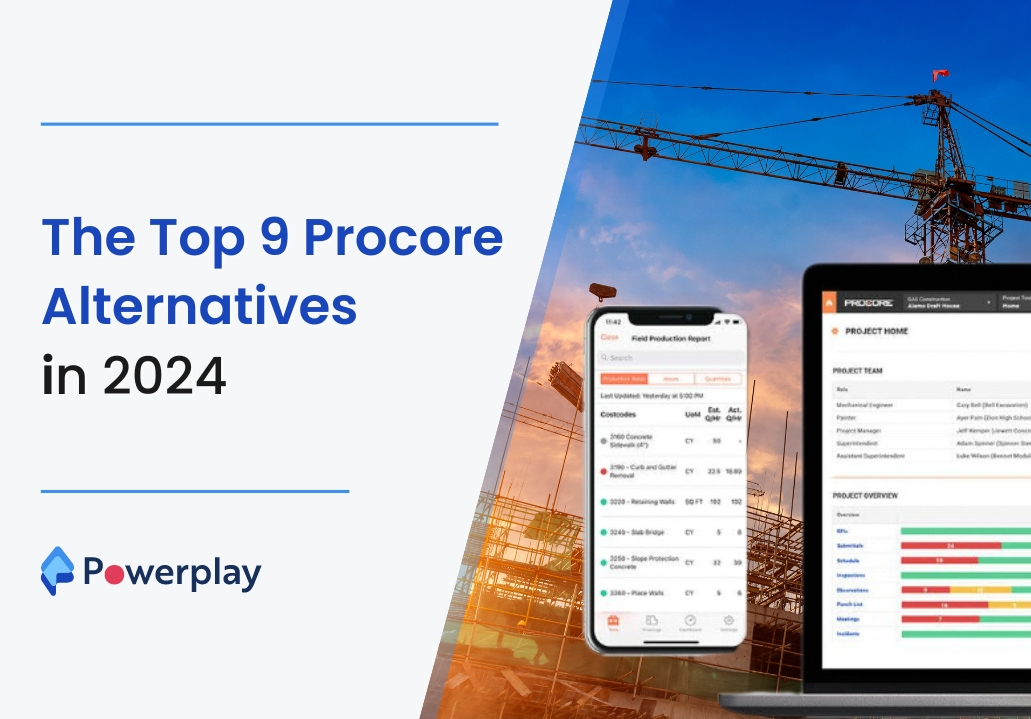A Simple Guide to Construction Profit Margin
-
Sapna
- March 29, 2024
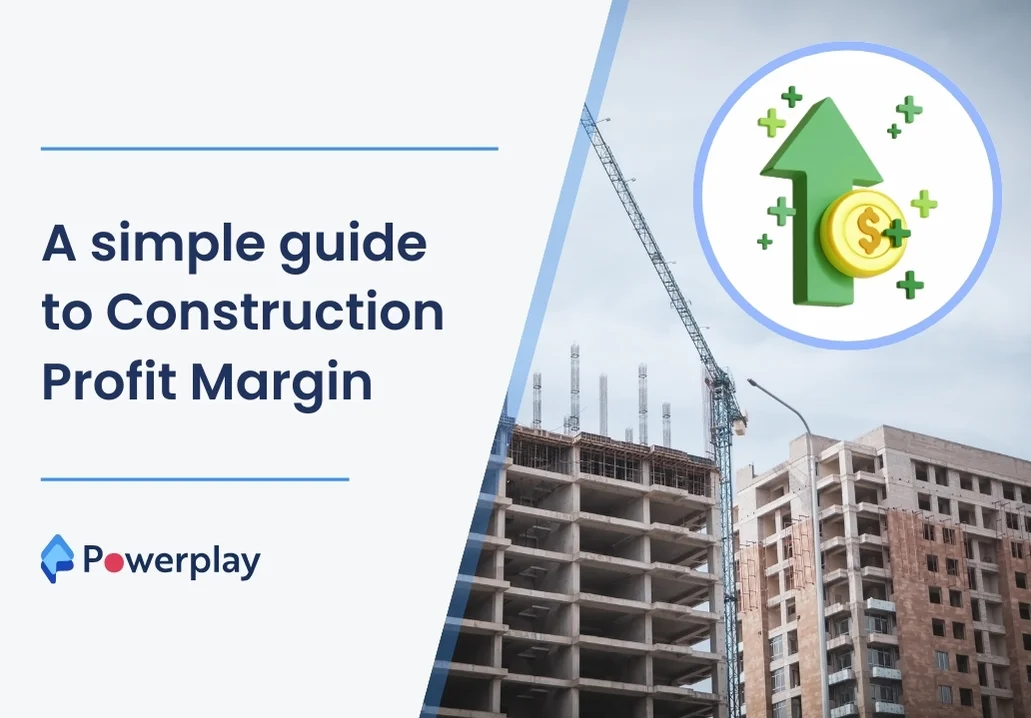
Understanding and optimising your Construction Profit Margin (CPM) is indeed crucial for long-term success. A construction profit margin is the percentage of profit a construction company makes on a project after accounting for all expenses. It’s a vital metric that reflects a business’s financial health and efficiency.
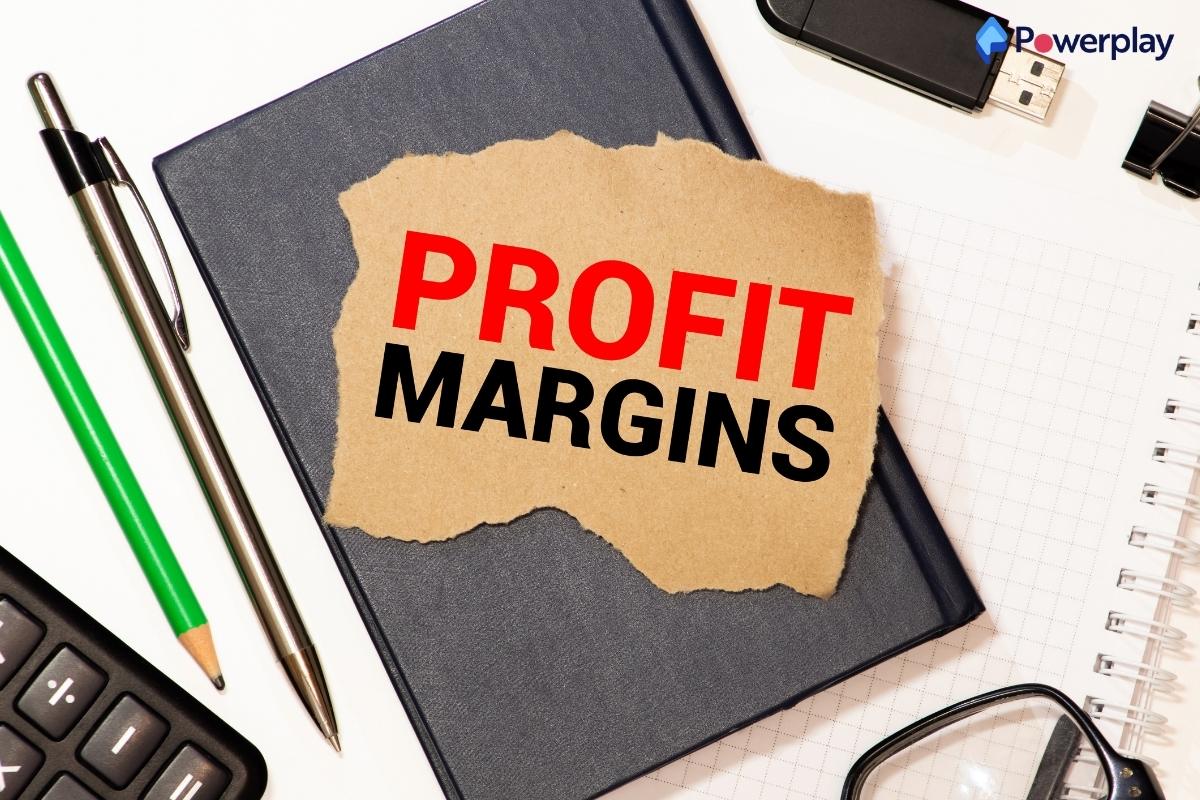
A healthy profit margin indicates a well-managed company with effective cost control and pricing strategies. Project costs can vary significantly in the construction industry, and maintaining a robust CPM is essential for sustainability and growth. As it not only helps assess the profitability of individual projects but also aids in strategic decision-making and competitive pricing.
In this blog, we’ll discover the ins and outs of Construction Profit Margin and explore its importance in steering your construction business toward profitability and success.
Table of Contents
ToggleWhat is the Construction Profit Margin?
CPM or Construction Profit Margin is a critical metric for assessing construction operations’ financial success and efficiency. It provides insight into the profitability of a construction project by indicating the percentage of revenue generated from the project that translates into actual profit.
A healthy Construction Profit Margin demonstrates that a construction company is effectively managing its resources, controlling costs, and maximising profitability. On the other hand, a low or negative Construction Profit Margin may indicate inefficiencies, cost overruns, or other financial challenges that need to be addressed.
By closely monitoring and optimising the Construction Profit Margin, construction companies can make informed decisions to improve financial performance, enhance competitiveness, and ensure long-term sustainability.
Calculation of Profit Margin
It is calculated by subtracting a project’s total expenses (including materials, labour, and overhead costs) from the project’s total revenue and then dividing the result by the total revenue.
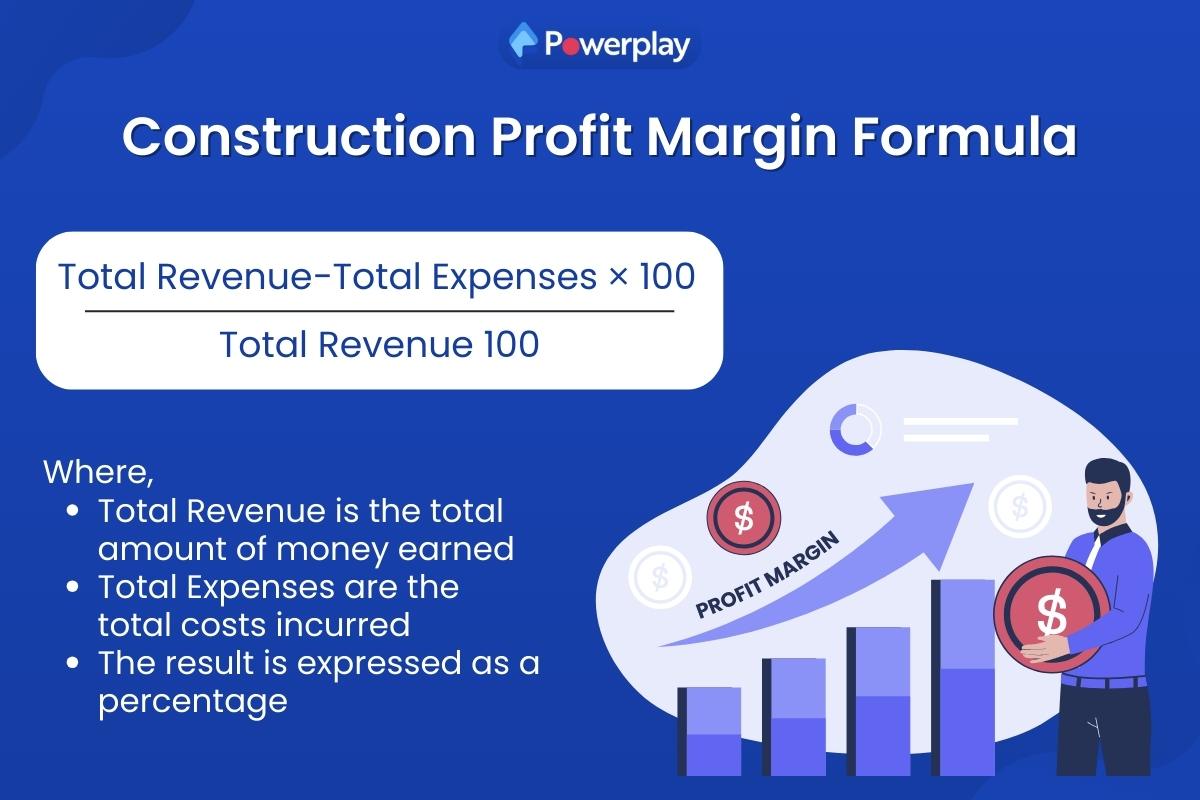
Construction Profit Margin formula:
Construction Profit Margin= Total Revenue−Total Expenses ✕ 100
Total Revenue 100
Where:
- Total Revenue is the total amount of money earned from the construction project.
- Total Expenses are the total costs incurred during the construction project, including materials, labour, overhead, and any other project-related expenses.
- The result is expressed as a percentage, indicating the proportion of revenue that is profit. A higher percentage indicates a more profitable project.
What is Overhead?
Overhead is the cost of running a construction business. These costs are not directly tied to specific construction projects but are necessary for the company’s overall operation.
Overhead costs can include expenses such as office rent, salaries of administrative staff, insurance, utilities, and equipment maintenance. These costs are essential for the business’s day-to-day operations. Effectively managing and calculating overhead is crucial for setting accurate prices and maintaining a healthy profit margin.
How to calculate overhead and profit in construction
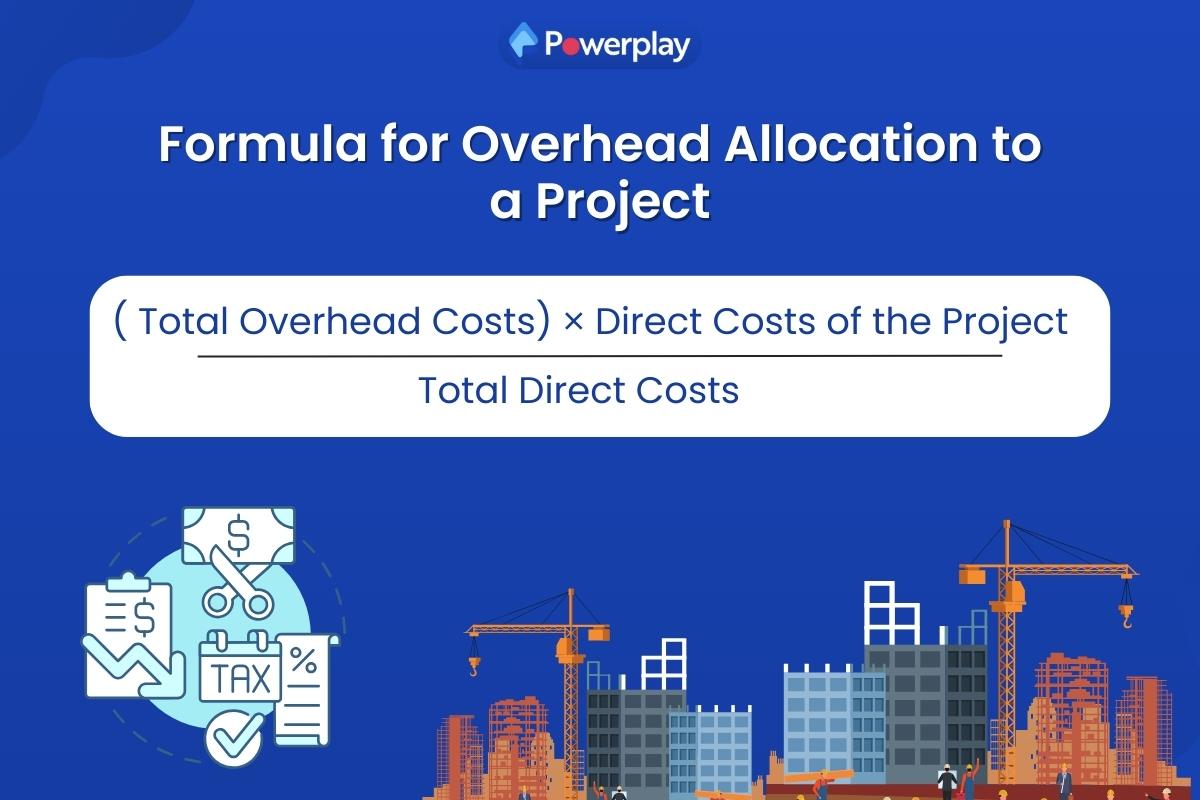
- Identify Overhead Costs: List all indirect costs that are not directly tied to a specific construction project.
- Total Overhead Costs: Add up all the identified overhead costs for a specific period (e.g., monthly, quarterly, or annually).
- Allocate Overhead: Allocate the total overhead costs to individual projects based on a chosen method, such as a percentage of direct costs or labour hours.
The formula for overhead allocation to a project can be:
Overhead Allocation= ( Total Overhead Costs) ✕ Direct Costs of the Project
Total Direct Costs
Profit Calculation
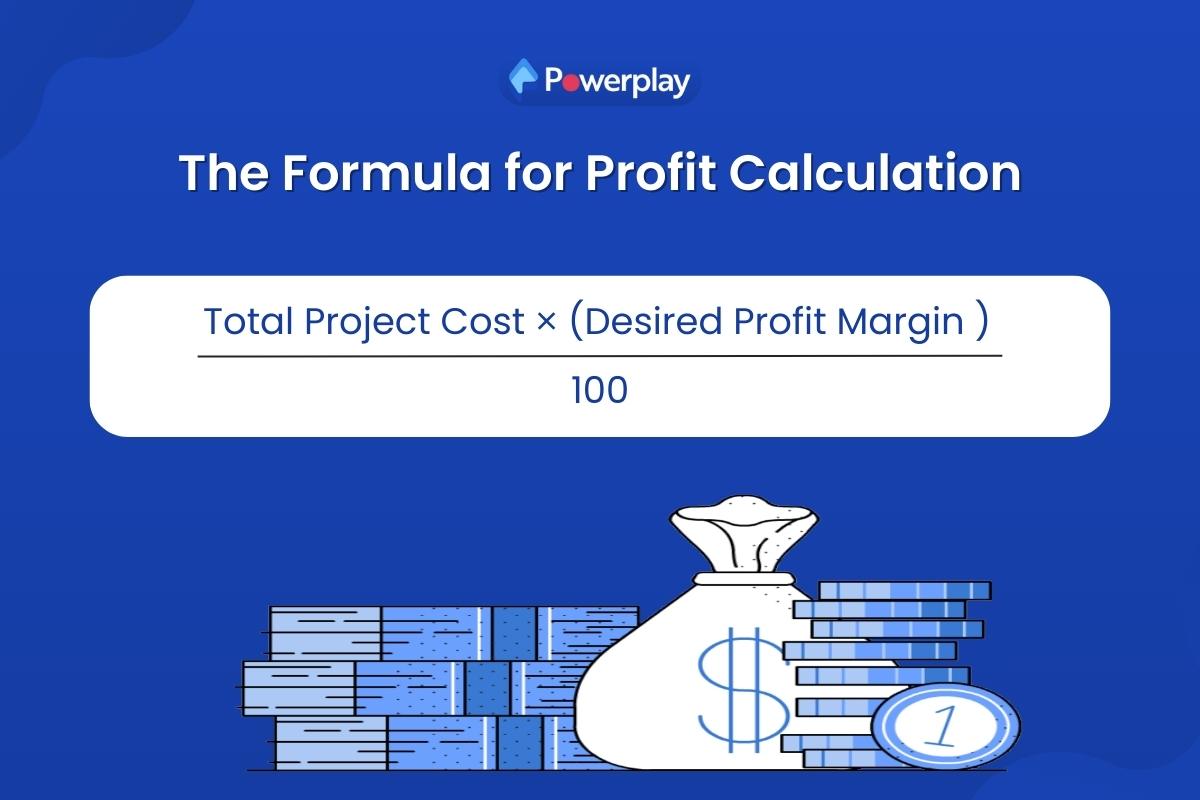
Profit in construction is the amount earned above and beyond the total costs (direct costs + overhead). It is typically calculated as a percentage of the total project cost.
To calculate profit:
- Determine Desired Profit Margin: Decide on the profit margin you aim to achieve for the project, typically expressed as a percentage.
- Calculate Total Project Cost: Add the direct costs of the project to the allocated overhead.
- Calculate Profit: Apply the desired profit margin to the total project cost.
The formula for profit calculation can be:
Profit = Total Project Cost ✕ (Desired Profit Margin )
100
Importance of Construction Profit Margin

The CPM is essential for understanding the financial health and efficiency of construction projects. Here are some reasons why it is important in construction business:
Project Viability: It helps assess a project’s viability. A project with a high profit margin indicates more profit, which is crucial for making informed decisions about whether to proceed to continue construction projects.
Performance Benchmark: It is a benchmark for evaluating a project’s performance. By comparing your project’s profit margin, you can identify areas for improvement and work on them to make strategic decisions to enhance profitability.
Pricing Strategy: Understanding your profit margin is essential for developing an effective pricing strategy. This ensures that your pricing covers all costs and provides a healthy profit, thereby securing your business’s financial stability.
Investor Attraction: A consistent track record of healthy profit margins can make your construction business more attractive to investors and lenders. It also shows how effectively you can manage and generate profits, which is crucial for securing funding and investment.
Long-term Sustainability: Maintaining a good profit margin is essential for the long-term sustainability of your construction business. It provides the financial buffer needed to weather economic overturn and invest in future growth opportunities.
Factors affecting Construction Profit Margin in construction
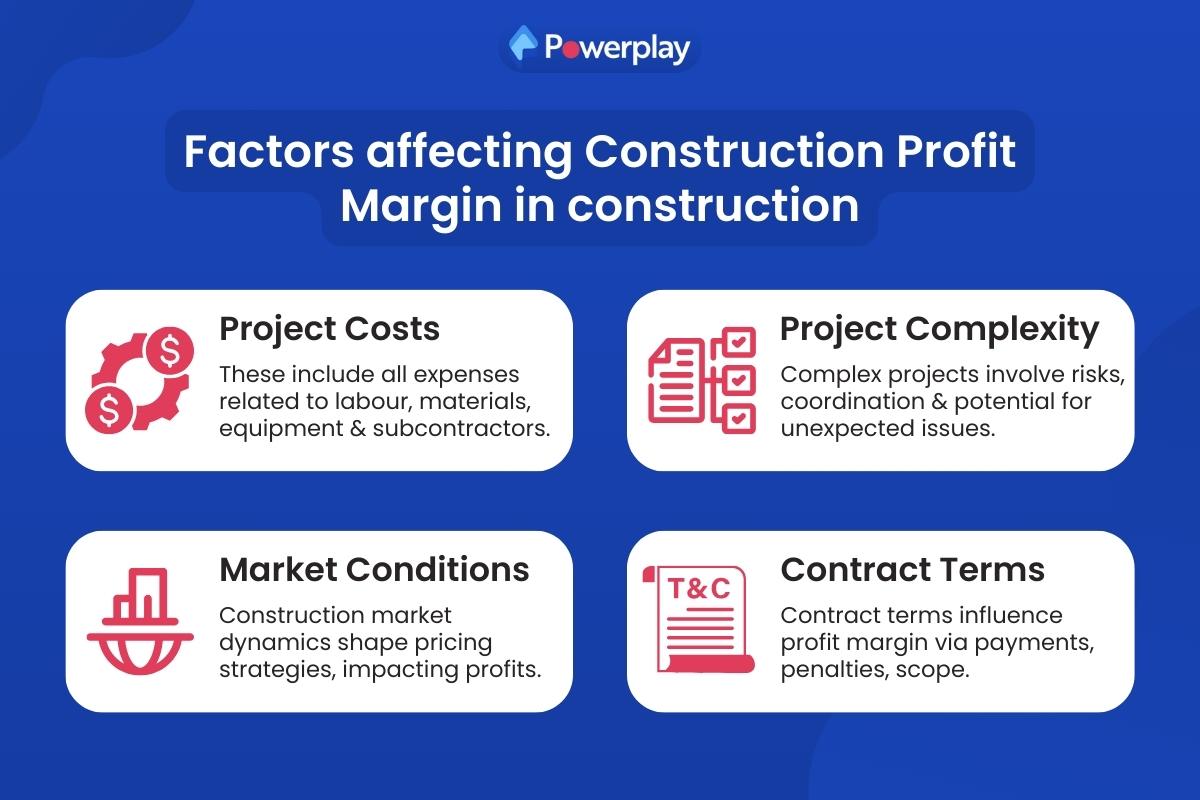
Construction profit margin is influenced by a variety of factors. All the factors are important for achieving the overall profitability of a project.
Here are four main factors that significantly affect profit margins:
Project Costs: These include all expenses related to labour, materials, equipment, and subcontractors. If not carefully managed and controlled, high project costs can reduce the profit margin.
Project Complexity: Complex projects often involve greater risks, more coordination, and the potential for unexpected issues. This can lead to increased costs and time delays, impacting the profit margin.
Market Conditions: The state of the construction market, including supply and demand dynamics, competition, and economic factors, has a huge influence on pricing strategies and ultimately affects profit margins.
Contract Terms: The contract terms related to payment schedules, penalties, and scope of work can significantly impact the profit margin. Clear and favourable terms can help ensure timely payments and reduce financial risks.
6 Tips to Boost Profit & Reduce Overhead
- Streamline Operations: Use construction management software like Powerplay to easily manage various tasks, such as scheduling, budget tracking, communication, material management, and labour management. It will help to reduce errors and save more time, improving efficiency and reducing administrative costs.
- Negotiate with Suppliers: Having strong relationships with suppliers will help to negotiate for better pricing and terms. This can help you directly reduce material costs and improve the project’s profitability.
- Optimise Labor: Invest in training and technology, such as advanced tools or software, to enhance workers productivity and reduce the need for overtime or extra hires. This will also cut down on labour costs while maintaining or even improving project quality.
- Manage Inventory: Control inventory tightly to reduce waste and minimise storage costs. Run regular audits, make just-in-time purchases, and try to minimise storage costs and reduce the risk of theft or damage.
- Focus on Quality: Deliver high-quality work to reduce rework and warranty claims, which can erode profits. This will enhance the company’s reputation and lead to more business opportunities and the ability to command higher prices.
- Monitor Financials: Regularly check the financial statements to identify areas where costs can be reduced without compromising quality. This will provide insights into which projects or services are most profitable and will help in decision-making and strategic planning.
How Much Profit Margin Should I Charge For A Construction Project?
The commercial profit margins you should charge for a construction project can vary based on several factors, including the type of project, your company’s overhead costs, and market conditions.
However, a commonly used benchmark in the construction industry is the “10-10 rule,” which suggests a profit margin of 20%, with 10% allocated for overhead and 10% for profit. However, this is not a hard rule, and many construction companies have increased their markups from 20% to 30% to keep up with volatile pricing and inflation.
Average Profit Margins in the Construction Industry
The average profit margins in the construction industry can change depending on factors such as the type of construction work, geographic location, and company size. However, for some general trends, the average profit margin is as follows:
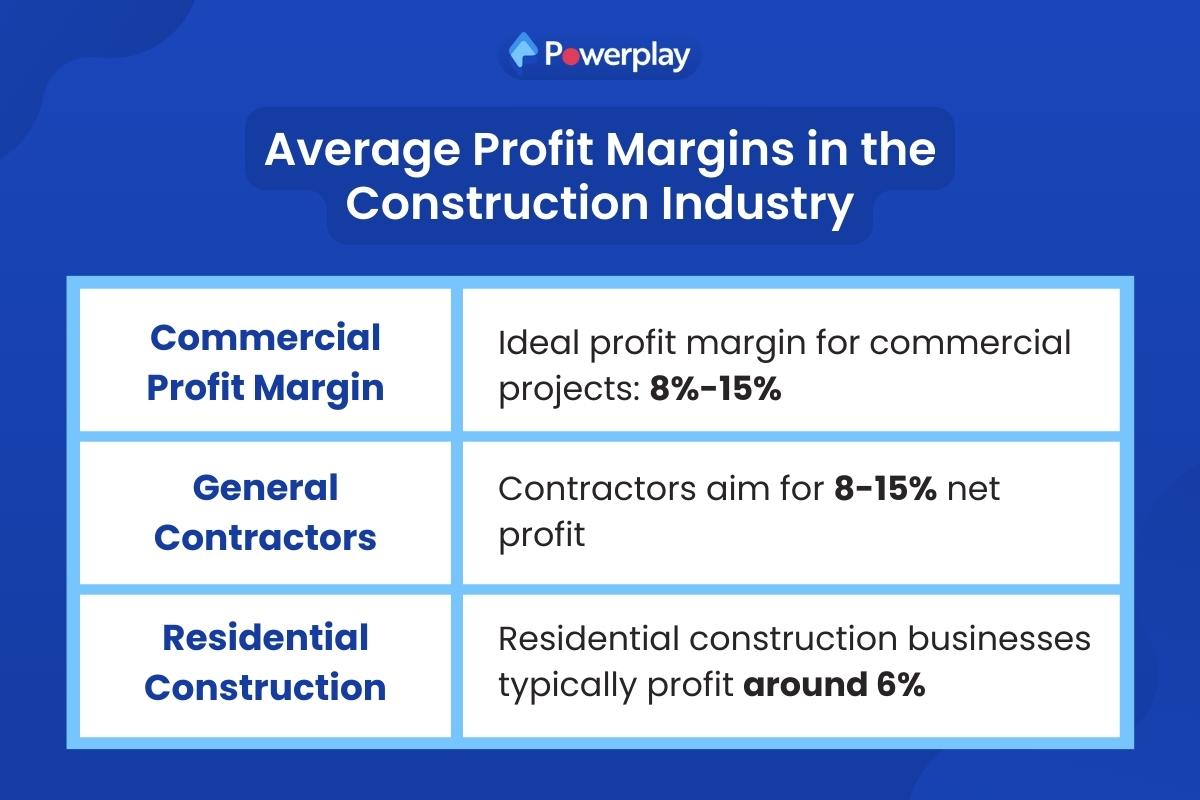
- Commercial Profit Margin: The ideal profit margin target for commercial construction projects is between 8% to 15%.
- General Contractors: According to Next Insurance, the minimum net profit objective for contractors should be around 8%, with 10% being average and 15% being ideal.
- Residential Construction: The average profit margin for residential construction businesses is around 6%.
How To Compute Construction Profit Margin
To compute the profit margin for a construction project, you need to follow these steps:
Step 1: Calculate Gross Profit Margin:

- First, determine your project revenue. This is the total amount you will receive from the client.
- Calculate the cost of sold goods, which includes all direct costs associated with the project (labour, materials, equipment, etc.).
- Minus the goods cost from the revenue to get your gross profit.
- Divide the gross profit with revenue and multiply it by 100 to get your gross profit margin percentage.
Formula:
Gross Profit Margin=( Revenue− COGS Revenue) ×100%
Revenue
Step 2: Calculate Net Profit Margin:
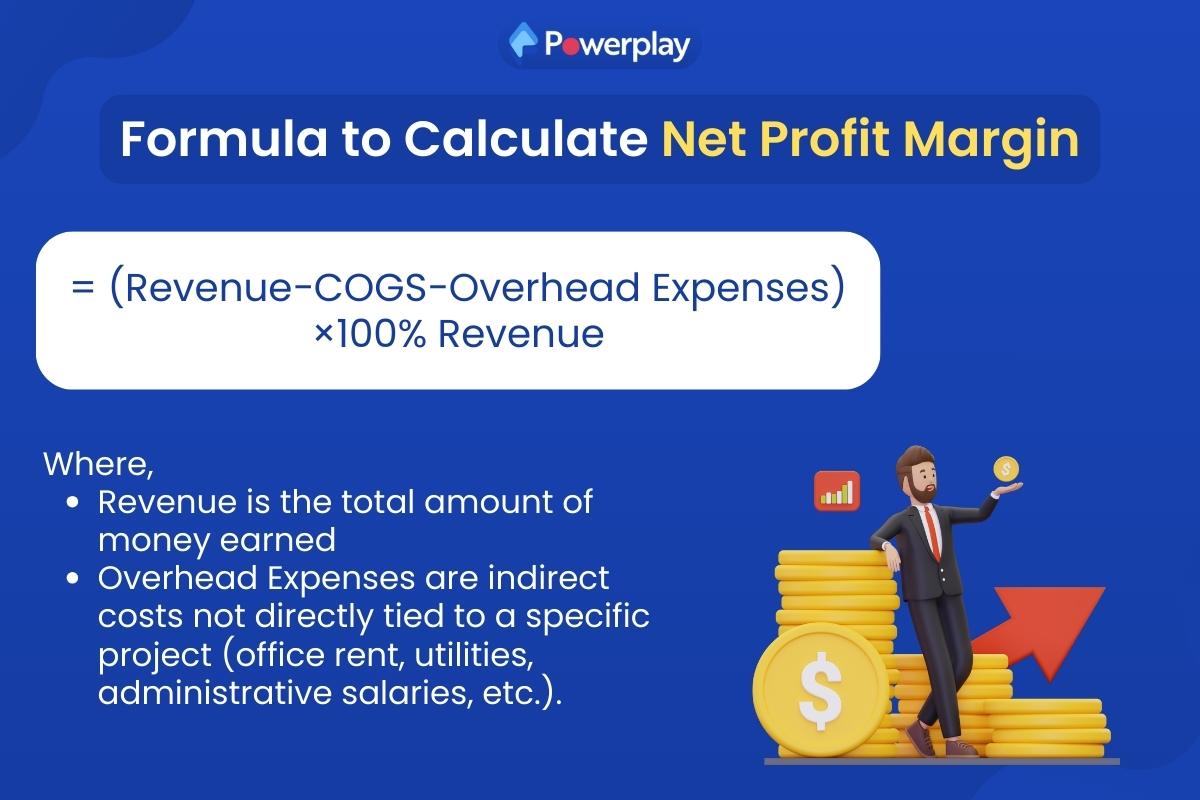
- Now, you need to account for your overhead expenses. These are indirect costs not directly tied to a specific project (office rent, utilities, administrative salaries, etc.).
- Subtract the overhead expenses from the gross profit to get your net profit.
- Divide the net profit by the revenue generated from the project and multiply it by 100 to get your net profit margin percentage.
Formula:
Net Profit Margin = (Revenue−COGS−Overhead Expenses) ×100%
Revenue
Optimise Construction Profit Margins with Powerplay
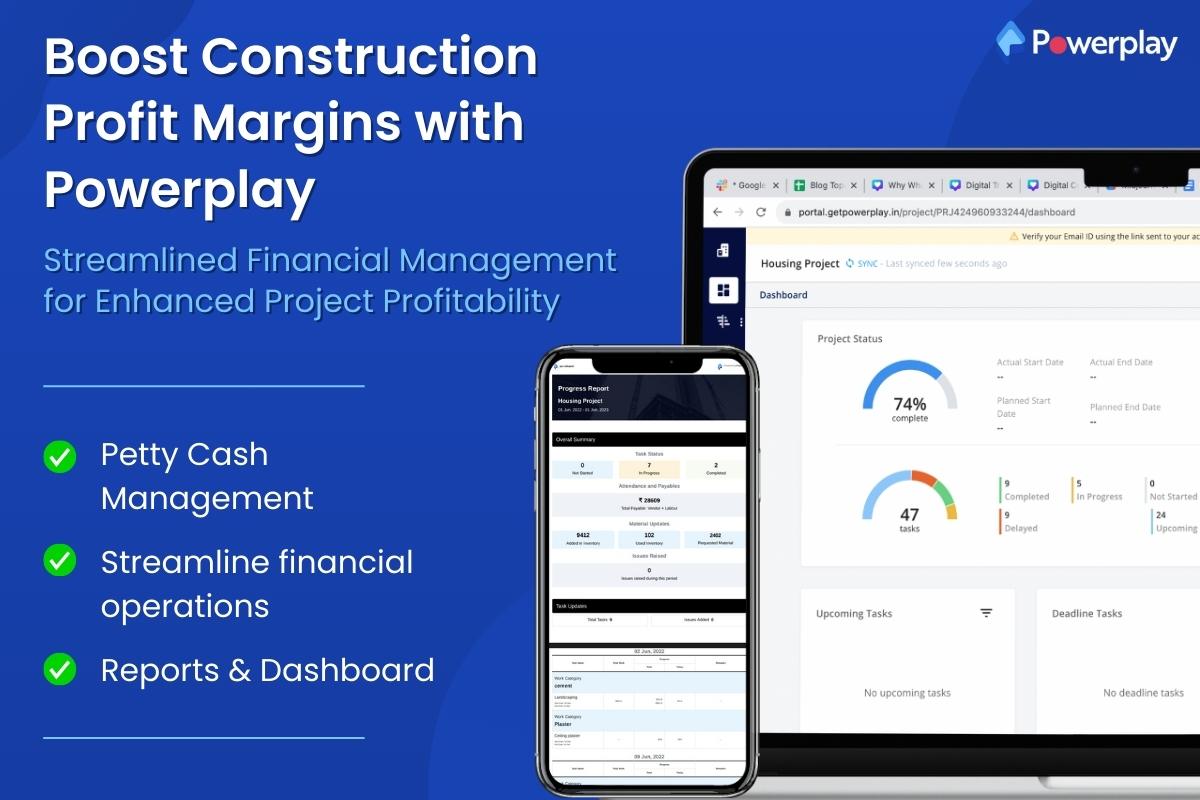
Powerplay, a construction management software, offers a complete solution to address the challenges of maintaining and improving construction profit margins. It provides easy-to-adopt features like Petty Cash Management and Reports & Dashboard, which allow users to streamline financial operations and provide real-time insights into project expenses.
This will automatically help stakeholders make data-driven decisions, reduce overhead costs, and enhance project profitability. So embrace Powerplay, India’s number one construction management software, in your business to effectively manage all your projects and maintain a healthy construction project margin. Download the Powerplay app now.
Conclusion
In conclusion, understanding and managing Construction Profit Margins (CPM) is vital for the success and growth of any construction business. By effectively implementing all the strategies, companies can enhance their profitability. Also, using construction management software like Powerplay can help streamline operations, reduce overhead costs, and provide real-time insights into project expenses.
Embracing these strategies and tools will enable construction businesses to maintain healthy profit margins, make informed decisions, and stay competitive in the ever-evolving construction industry.
